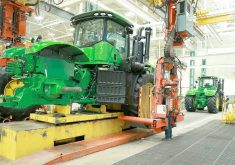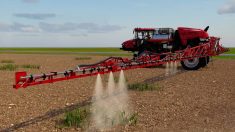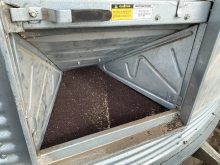As the livestock industry has learned over the years, political circumstances have shown that the free market is not really free.
A recent report by the USDA noted that the U.S. cattle herd was down to numbers last seen in the 1950s. The Alberta cattle herd may be down by 1 million head by this time next year. Hog production in Alberta has crashed over the past two years. Sheep production in this province has steadily declined for the past five years.
There is a message to this trend. Is this a harbinger of the future of livestock production in North America and particularly Alberta? Unless there is a real change in market returns I would suggest that the glory days of livestock production in Alberta may have come to an end. Governments may want to note that prognostication as they have invested literally billions of dollars in developing and propping up the livestock industry in Alberta over the past 30 years.
Read Also

Farm equipment sales sector sees significant structural changes
Farming equipment sales have been declining for a number of years now, and one industry professional believes structural changes in the industry are needed to curb that trend.
I suspect this has crossed the minds of government deep thinkers which may have helped jolt the creation of the Alberta Livestock and Meat Strategy. But it has also crossed the minds of many others that the strategy is just a desperate attempt by government to deflect the reality of the livestock situation into the realm of some false hope that all will be better. No matter the criticism, the strategy has much going for it – if for nothing else than the rationalization of support programs and research.
But producers instinctively know that the best cure for a faltering industry is consistently high market prices, not government bailouts. The exception to that was the old government tripartite livestock stabilization program of the 1990s. Government planning geniuses might want to revisit that much-loved program as they engage in the never-ending exercise to find the perfect government subsidy program. But I digress.
Market analysts would see declining livestock numbers as positive. After all, lower supply should see increased market prices. That’s bedrock free market philosophy. But as the livestock industry has learned over the years, political circumstances have shown that the free market is not really free. BSE, COOL and the recent National Farmers Union study on cattle industry economics attest to that observation.
Significantly higher market prices would see a dramatic turnaround in the livestock industry – at least temporarily. But it will not turn around the creeping malaise that started in Europe and will sooner or later surely affect livestock production in this province. Government regulation of every kind will frustrate livestock production to the point where even high levels of subsidization will not be able to maintain the industry at a commercial level. The Europeans are showing that despite high subsidization, urban bucolic perceptions of agriculture will see it reduced, through regulations, to the level of a quaint “Old MacDonalds Farm.”
The other spectre that will affect livestock production in North America is cheaper livestock production and meat processing in south America and Asia. Consumers, at least in Europe, have shown that although they may wish their immediate environment and agriculture to be pristine and politically correct, they are not adverse to buying their food from parts of the world where standards are non-existent. A clear case of “out of sight, out of mind.” As long as the Western world has money that attitude will continue.
Livestock and meat production in the undeveloped world will surely increase. Cheap labour, lower food safety standards and corrupt environmental regulations alone will favour those areas. Put into place high-tech intensive livestock production for hogs and poultry and it isn’t difficult to see where meat production will go. North America may well be relegated to sending feedstuffs to offshore areas and buying back the finished product.
The processing industry will surely follow to take advantage of the same advantages. Suggestions have been made that the salvation of the North American meat processing industry is in sending whole carcasses to Asia to be processed and brought back case-ready. There is a message in that concept. Giant processors such as JBS from Brazil are already showing where the processing and marketing power is coming from.
As gloomy as it may all sound, I suspect that only a long lasting worldwide famine will change the long-term trend in livestock production and meat processing in North America.














